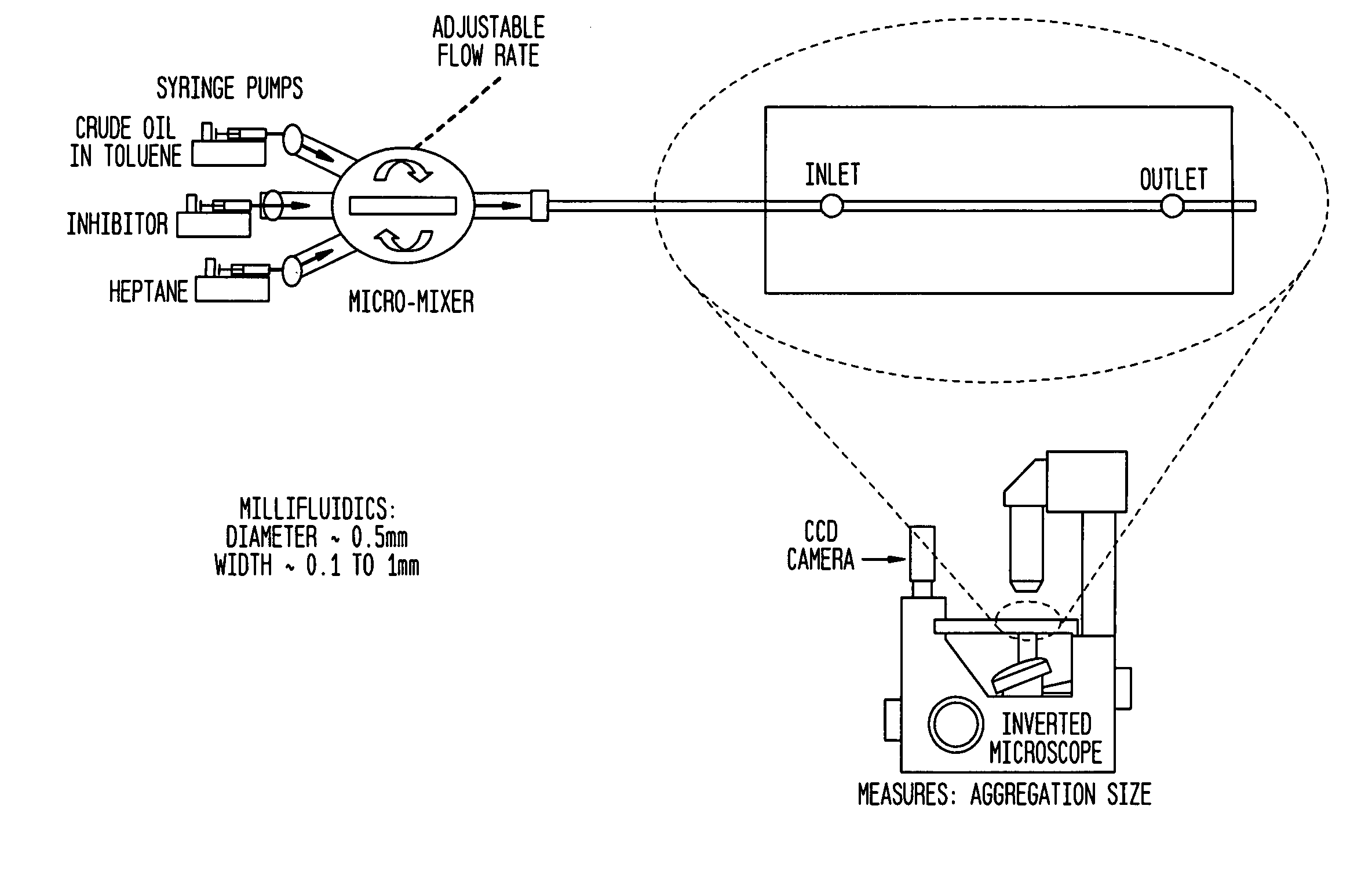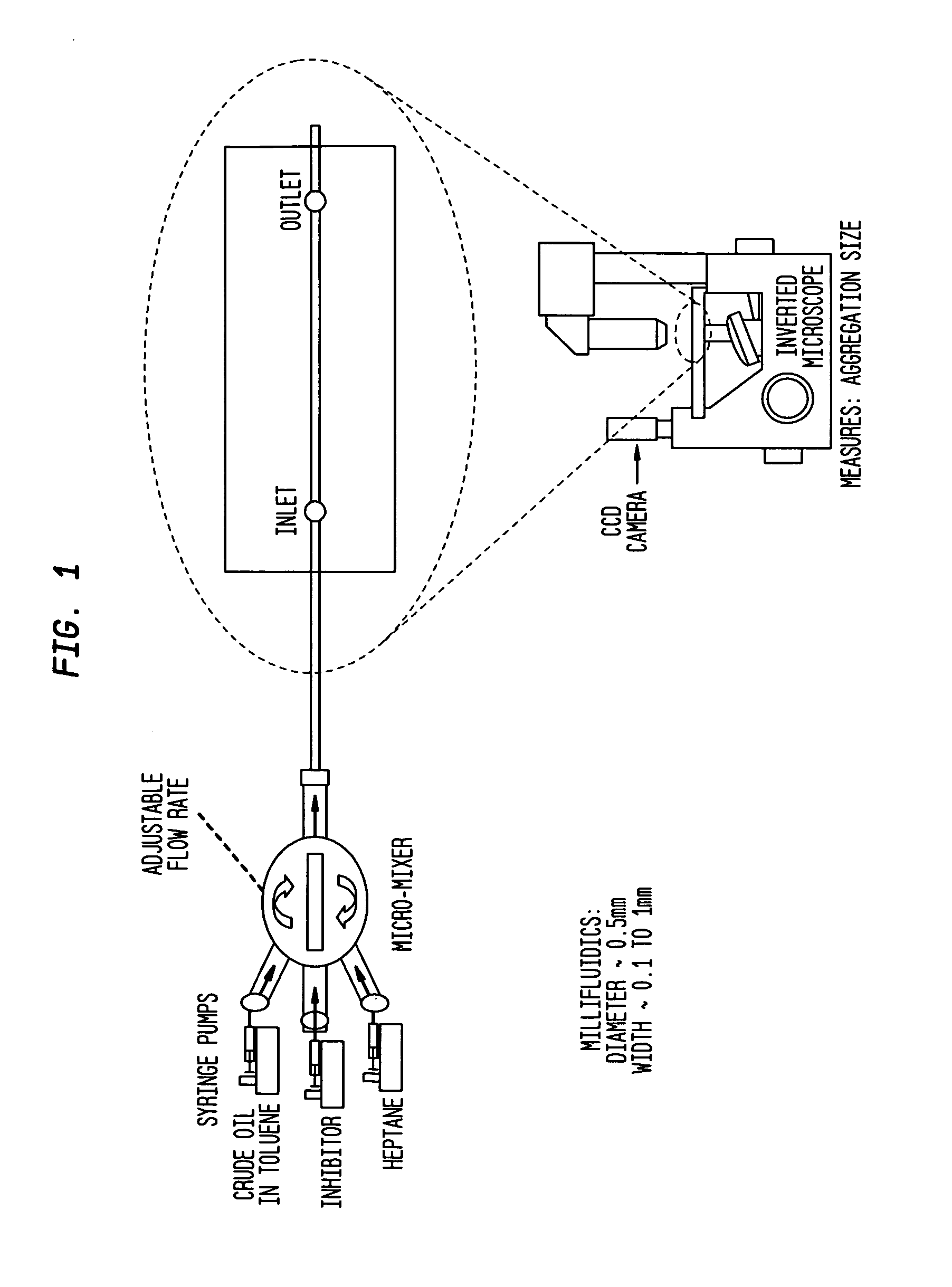Systems and methods for evaluating asphaltene deposition inhibitors
a technology of asphaltene deposition inhibitor and system, which is applied in the direction of material testing goods, testing metals, withdrawing sample devices, etc., can solve the problems of asphaltene deposits clogging downhole tubulars, affecting the functioning of separator equipment, and affecting the oil flow through these pipes
- Summary
- Abstract
- Description
- Claims
- Application Information
AI Technical Summary
Benefits of technology
Problems solved by technology
Method used
Image
Examples
Embodiment Construction
[0015]Crude oil from geological formations commonly contains solids, typically as one or more of waxes, asphaltenes, sulfur, minerals (e.g., scale), and hydrates. When crude oil is transported via pipeline, e.g., from a geological formation to a wellhead or from a wellhead or a storage vessel to a refinery via pipeline, changes in the pressure, temperature, composition, etc. (or other parameters of the flowing crude oil) can lead to deposition of solids on the pipe walls and surfaces.
[0016]Precipitation means the formation of a solid phase out of a liquid phase and, as used herein, refers to the agglomeration of solids while remaining suspended in the bulk fluid fraction. Deposition means the formation and growth of a layer of the precipitated solid on a surface and, as used herein, refers to the falling out of suspension of the agglomerated solids and the resulting coating of the agglomerated materials on the interior wall of the pipe or tubing. Aggregation, as used herein, can ref...
PUM
 Login to View More
Login to View More Abstract
Description
Claims
Application Information
 Login to View More
Login to View More - R&D
- Intellectual Property
- Life Sciences
- Materials
- Tech Scout
- Unparalleled Data Quality
- Higher Quality Content
- 60% Fewer Hallucinations
Browse by: Latest US Patents, China's latest patents, Technical Efficacy Thesaurus, Application Domain, Technology Topic, Popular Technical Reports.
© 2025 PatSnap. All rights reserved.Legal|Privacy policy|Modern Slavery Act Transparency Statement|Sitemap|About US| Contact US: help@patsnap.com


